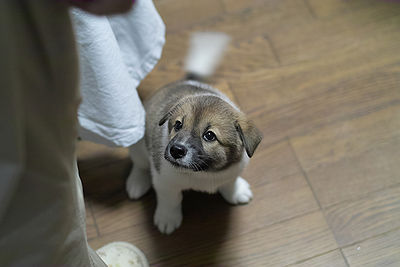
Dogs use their tails as well as other parts of their bodies to express a variety of emotions. Tail wagging sends signals to other animals (human too) about what they are feeling at that moment. It’s important to understand these signs especially since not all tail wagging is friendly. It’s usually accompanied by other body language signs.
A tail that is held high while wagging, sometimes rapidly, can be a sign of aggression. A tail held high with only the tip moving or held stiffly means approach with caution.
A tail that is straight out from the body usually means curiosity or interest. It is likely a friendly stance and poses no threat.
When a dog’s tail is between its legs, curved under the body, it is an indication of fear and/or submissiveness. A dog like this needs to be approached very carefully, as it may fear-bite.
Some dogs have tails that are normally carried low or can be curved over the back. This can be a sign that the dog is alert and concentrating or just resting.
There is a theory that dogs who tend to wag more strongly right are happy . Dogs wagging more left-sided are experiencing negative feelings.
The faster the tail way, the more excited the dog is.
Dogs who wag in a circular motion are very happy.
Of course there’s nothing quite like the happy tail-wagging of a dog greeting a loved human.
The shape and natural carriage of a dog’s tail can help us to know the breed of dog. Example – northern breeds such as Samoyeds and Huskies carry their tails over their backs. The thick fur of their tails helps to keep their noses warm when they curl up for sleep.
If you are not familiar with a dog, always approach with caution or not at all. And learn to read all body signals. Whether the dog is leashed or loose, always ask the owner (if present) if it’s all right to pet the dog. Don’t stand over the dog, bend low and hold out your hand for the dog to sniff. Don’t pet a dog on top of the head, most don’t enjoy it. Try scratching near the ears, most dogs love it.
Dogs teach us a lot about themselves if we only look and listen.
On a personal note, my German Shepherd, Quanah, does things her own way. When she wags her tail to the right, it’s a sign of excitement or aggression. It usually happens when she has a cat or a strange dog in her sights or when children tease her.
Related Articles

